Amateur photographers have a general tendency of sticking to faster shutter speeds. They believe that it’s essential to freeze the subject and get tack sharp images. Only when they advance a bit in the field of photography do they realize that slower shutter speeds can yield amazing results. Photographer Mike Smith shares five ways you can get creative with slow shutter speeds:
Working with slow shutter speeds gets tricky, as the chances of camera shake increase. When working with slow shutter speeds, Smith recommends that you use a tripod or a remote shutter release (or use self-timer as an alternative).
And if you plan to work with slower shutter speeds during daylight, having an ND filter will come in handy.
1. Wispy Clouds
We don’t pay attention to the clouds much but they’re constantly floating in a certain direction. You can use a slower shutter speed to give a sense of movement in the shot. However, Smith suggests that you pay attention to the direction in which the clouds are moving.
“What generally works best is when they’re coming towards you or moving away from you instead of going from one side of the frame to the other.”
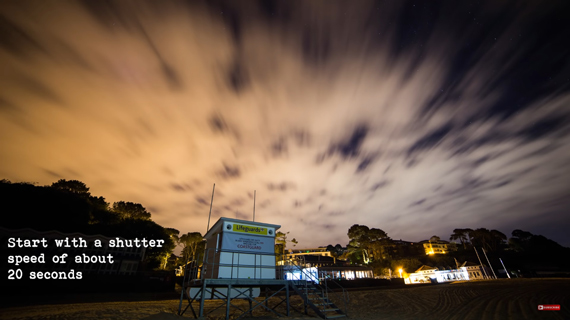
2. Light Streaks
When the light gets low and vehicles start turning their lights on, it can be a great opportunity to take images of light trails using slow shutter speed. Although the moving vehicles may not show up in the final image, the trails will give a sense of movement. Learn to compose your images in such a way that the light trails form an important element of your photograph. For instance, they can be used as leading lines to direct your viewers through your image.
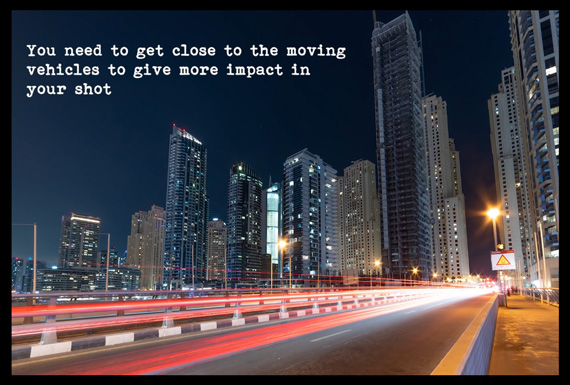
3. Smooth Water
When you use slower shutter speeds to capture flowing water, it will blur the movement and make the water appear misty. As landscape photographers usually do, you can use ND filters to take 1–2 second exposures of streams and waterfalls to make the water to appear silky smooth. The same works well for lakes and oceans, but you need to experiment with the shutter speed to determine the sweet spot. The shutter speed will depend on how fast or slow the water is moving.
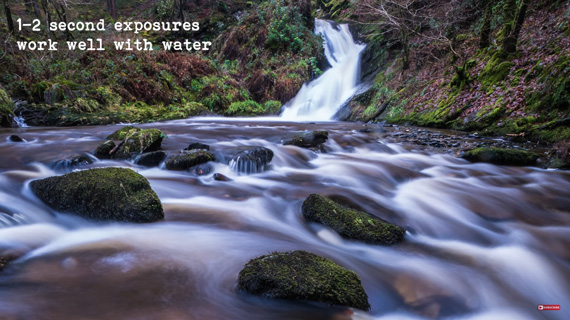
4. Panning Blur
Panning is a technique used by photographers to integrate a sense of motion in their images. You often see photographers at racing events using this technique. To pan, slow down your shutter speed and take a burst of images of a moving subject while moving the entire camera to track the subject. The resulting image will have the subject in focus while the surrounding gives a sense of motion.
Smith recommends that you start from around 1/60 second and slow down until you get a right mix of sharpness and movement in your images.
“If you’re using a wide lens, you can slow down the shutter speed. But if you’re using a telephoto lens, you might want a monopod and a faster shutter speed.”
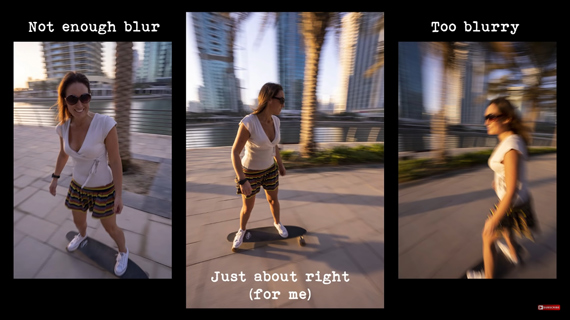
Be aware that this technique requires a bit of practice before you start getting proper results. So be ready to spray and pray when starting out.
5. Light Painting
When shooting in really low light conditions, you can have the shutter open for quite some time. Use this time to get creative and paint the foreground using a light source, like a flashlight.
“If you do a really long exposure, the image tends to be quite flat. With light painting, you can really lighten up the foreground.”
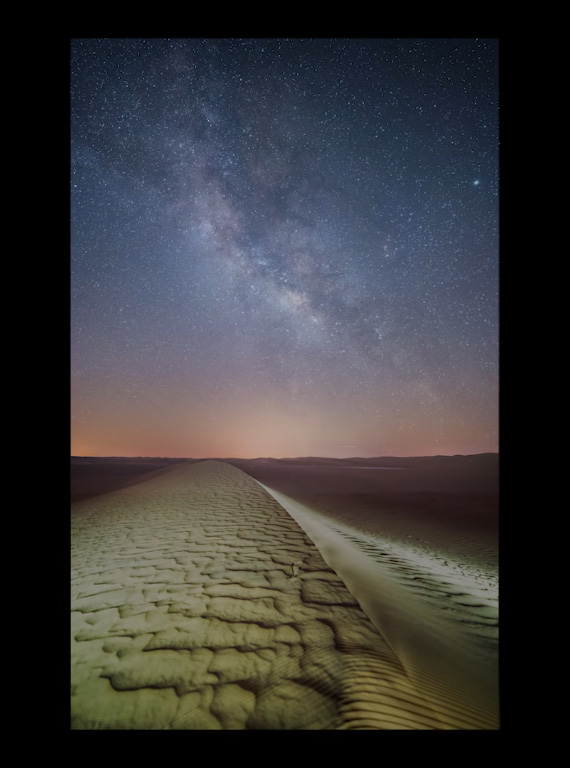
How often do you use slow shutter speeds in your photography?
Go to full article: Long Exposures: 5 Creative Uses
What are your thoughts on this article? Join the discussion on Facebook
PictureCorrect subscribers can also learn more today with our #1 bestseller: The Photography Tutorial eBook
The post Long Exposures: 5 Creative Uses appeared first on PictureCorrect.
from PictureCorrect https://ift.tt/3orMupE
via IFTTT






0 kommenttia:
Lähetä kommentti